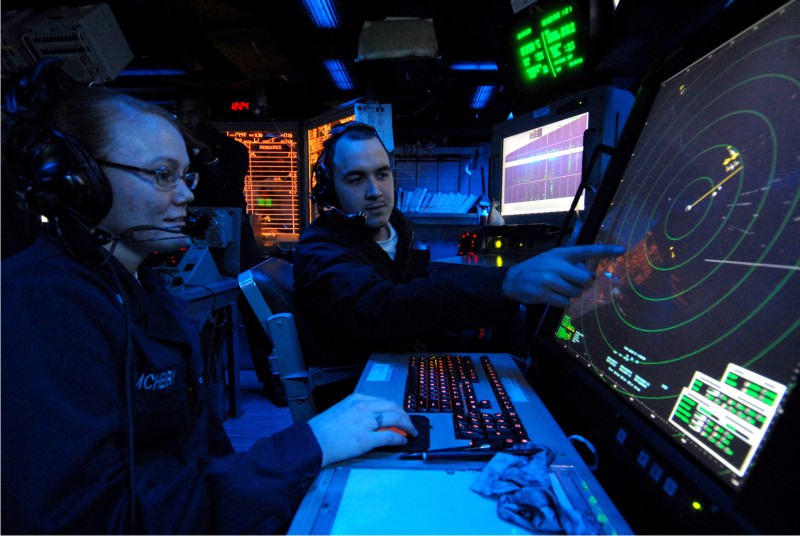
Welcome to MSW’s Scuttlebutt! Here’s the news for the day.

Alert - Community Build Session 6
Muster up, all Community Build participants!
It's that time again, yes, time for me to start poking, prodding and reminding to you you all that the close of Session 6 of our Community Build is gaining fast!
As per contest rule, all image updates have to be uploaded and in your personal BLOG by the first of December, EST, so mark your calendars, my friends, and take heed!
Feature - The Ships at ScaleModelWorld 2008
Senior Editor Rui Matos (Skipper) gives us a photo report of another successful event, this time IPMS UK''s Scale Model World 2008, held in Telford, England UK.
Feature
On Display - IJN I-400 Class Submarine
MSW Senior News Editor Kenny Loup (gator) shares a fine portfolio of images, his latest submarine scene focusing on the IJN submarine, I-401, in this "On Display" feature!
On Display.

Life Magazine Photo Archive
Following up from yesterday’s website, today’s website is Life Magazine’s Photo Archive. These were posted by Life Magazine on Google.com. Enjoy.
Website

This Day in U.S. Naval History
1856 - Cdmr. Andrew H. Foote lands at Canton, China, with 287 Sailors and Marines to stop attacks by Chinese on U.S. military and civilians.
1917 - USS Kanawha (AO 1), Noma and Wakiva sink German sub off France.
1933 - Navy crew (Lt. Cmdr. Thomas G. W. Settle and Maj. Chester I. Fordney, USMC) sets a world altitude record in a balloon (62,237 ft.) in flight into stratosphere.
1943 - Operation Galvanic, under command of Vice Adm. Raymond Spruance, lands Navy, Marine and Army forces on Tarawa and Makin.
1962 - President John F. Kennedy lifts the Blockade of Cuba.
Russian frigate prevents foreign vessel seizure by pirates
Source: Russian Navy
The Russian Neustrashimy (Fearless) frigate prevented the seizure of a foreign vessel flying the Saudi flag by pirates off Somalia's coast on Sunday, Russian Navy spokesman Igor Dygalo said.
"The Rabikh vessel, sailing some 30 miles from the Neustrashimy, was attacked by several high-speed pirate boats," Dygalo said.

The Neustrashimy entered waters off the Somali coast in late October. Somali pirates have attacked around 60 ships so far this year, resulting in the seizure of around 30 vessels. The East African nation has been without a functioning government since 1991 and has no navy to police its coastline.
A Ukrainian ship, the Faina, carrying tanks and heavy weaponry was seized by Somali pirates on September 25. The pirates have demanded an $8-million ransom in exchange for the release of the Ukrainian-Russian crew.
The Faina's Russian captain died of a heart attack after the vessel was seized. The pirates holding the ship have threatened to kill the hostages if a military operation is launched against them. Food and water supplies on board the vessel, which has been held for seven weeks, are reportedly running critically low.
NATO and the EU have recently announced plans to increase their naval presence in the Gulf of Aden. About 20,000 vessels pass through the region annually.
In early June, the UN Security Council passed a resolution permitting countries to enter Somalia's territorial waters to combat "acts of piracy and armed robbery at sea."
The Navy's Floating Fiasco
Source: Time Magazine
The maiden voyage of the taxpayers' newest nearly $2 billion warship stalled for two days in August. That's when the stern gate of the U.S.S. San Antonio — needed to roll vehicles onto and off the nearly 700-ft. vessel — wouldn't work. The Navy eventually got the gate fixed in time for the ship to leave Norfolk and sail to the Persian Gulf, where its mission is to hunt down smugglers. But now the San Antonio has been forced into port in Bahrain for at least two weeks of repairs to leaks in the hefty pipes feeding fuel to two of its four engines. Hinting at the seriousness of the problem, the Navy has just dispatched a team of 40 workers — including engineers, pipe fitters and welders — to Bahrain to make the San Antonio shipshape. "Forty technicians — that's ludicrous," says Norman Polmar, an independent naval expert. "It means the problems are major, because the ship has mechanics, metal smiths and other people on board as part of the crew, and they're supposed to take care of minor problems." And you thought McHale's Navy was canceled back in 1966.
The San Antonio is the first in a new class of amphibious ships — blue-water buses — each of which carries 350 sailors and is responsible for ferrying 700 Marines and their gear to global hot spots. And the ship's sad plight represents in miniature all that is wrong with the way the Pentagon buys its weapons. The pattern of haste and waste accelerated in the Cold War's wake and simply exploded following 9/11. It highlights the challenge facing President-elect Barack Obama as he contemplates retooling an Industrial Age military — primed for state-on-state warfare — into the more agile force better suited for 21st century conflicts of the type now being waged in Afghanistan and Iraq.
Navy inspections of the San Antonio have found a raft of problems so baked into its design that many Navy officials fear it can never be made right, despite its price tag's having risen from $644 million to $1.8 billion. "Some significant fraction of the welds in that ship were flawed and had to be redone," John Young, the Pentagon's top weapons buyer, told Congress in June. "I shouldn't be forced to pay on behalf of taxpayers any price for any level of deficient performance." Still, that's just what the Navy did, forking over an additional $100 million to make it seaworthy after the Navy had taken delivery of the vessel from its builder, Northrop Grumman, in 2006. The service said it needed the new ship to replace an older one it was retiring and could finish the work more cheaply in its own shipyard. The Navy has blamed Northrop Grumman for poor work; the company has blamed the Navy for a constantly changing design, as well as Hurricane Katrina, which hit the Gulf yards in which the ship was built.
Navy officials have said the San Antonio has so many problems because it is the first ship in its class, a claim Polmar dismisses. "We've been building these kinds of ships since 1943," he says. "It has no big missiles, no advanced radar and no nuclear propulsion." The Government Accountability Office (GAO) said last year that the San Antonio's woes began because the Navy relied on "immature" computer blueprints that infected its entire construction. That led to delays that cost up to five times what it would have if the work had been done in proper sequence. The GAO found that the ship had been "delivered to the war fighter incomplete and with numerous mechanical failures," including "safety concerns related to personnel, equipment, ammunition, navigation and flight activities." Navy officials say the leaking oil that forced the San Antonio into port in Bahrain poses no safety threat to its crew — a claim viewed dubiously by some sailors.
Navy inspectors also recently criticized the U.S.S. New Orleans, the second vessel in the San Antonio's class. It "cannot support embarked troops, cargo or landing craft" — its primary mission — according to a report obtained by the independent Navy Times. Navy officials say the third and fourth vessels are performing much better. The rush to produce the fleet might make military sense if they were needed, but the last time Marines stormed ashore — the key reason the taxpayers are spending $14 billion on the San Antonio and at least eight more ships just like it — was nearly 60 years ago, at Inchon during the Korean War.
Photo of the Day

Air Traffic Controller 2nd Class Erin McHenry, of Wichita, Kan., and Air Traffic Controller Airman Apprentice Adam Minkel, of Pipestone, Minn., track aircraft on a radar console in the amphibious air traffic control center aboard the forward-deployed amphibious assault ship USS Essex (LHD 2).
Gator











